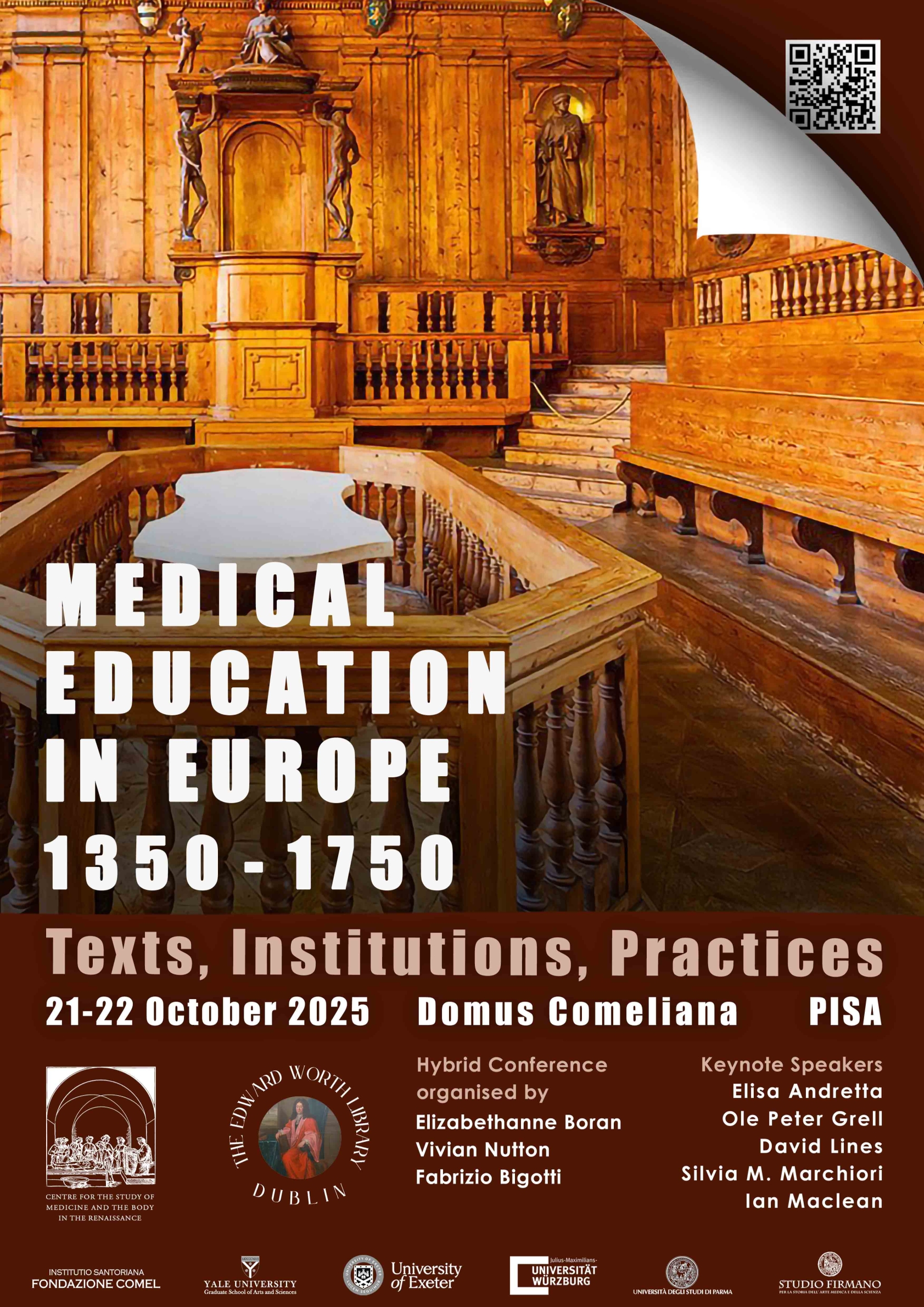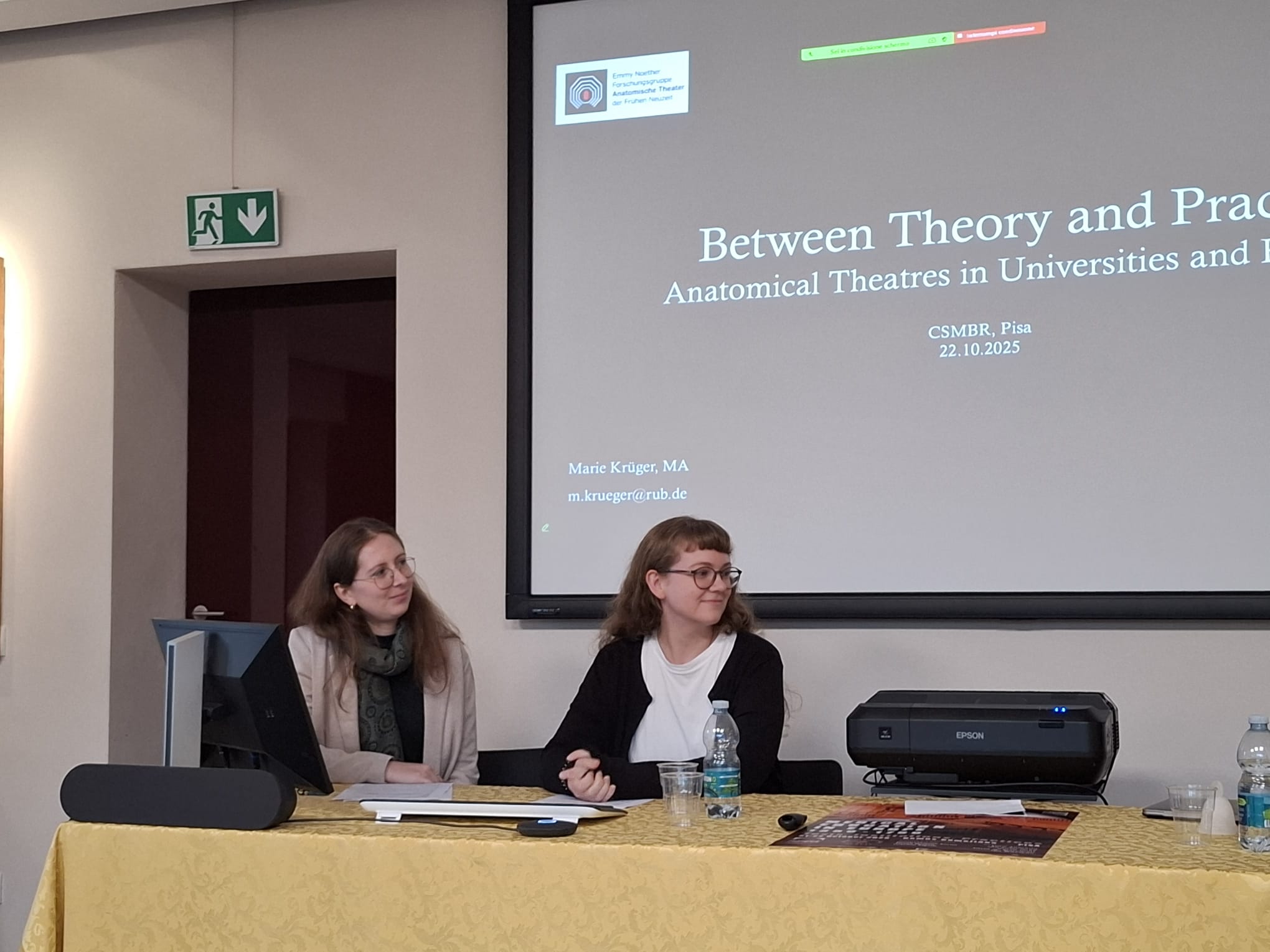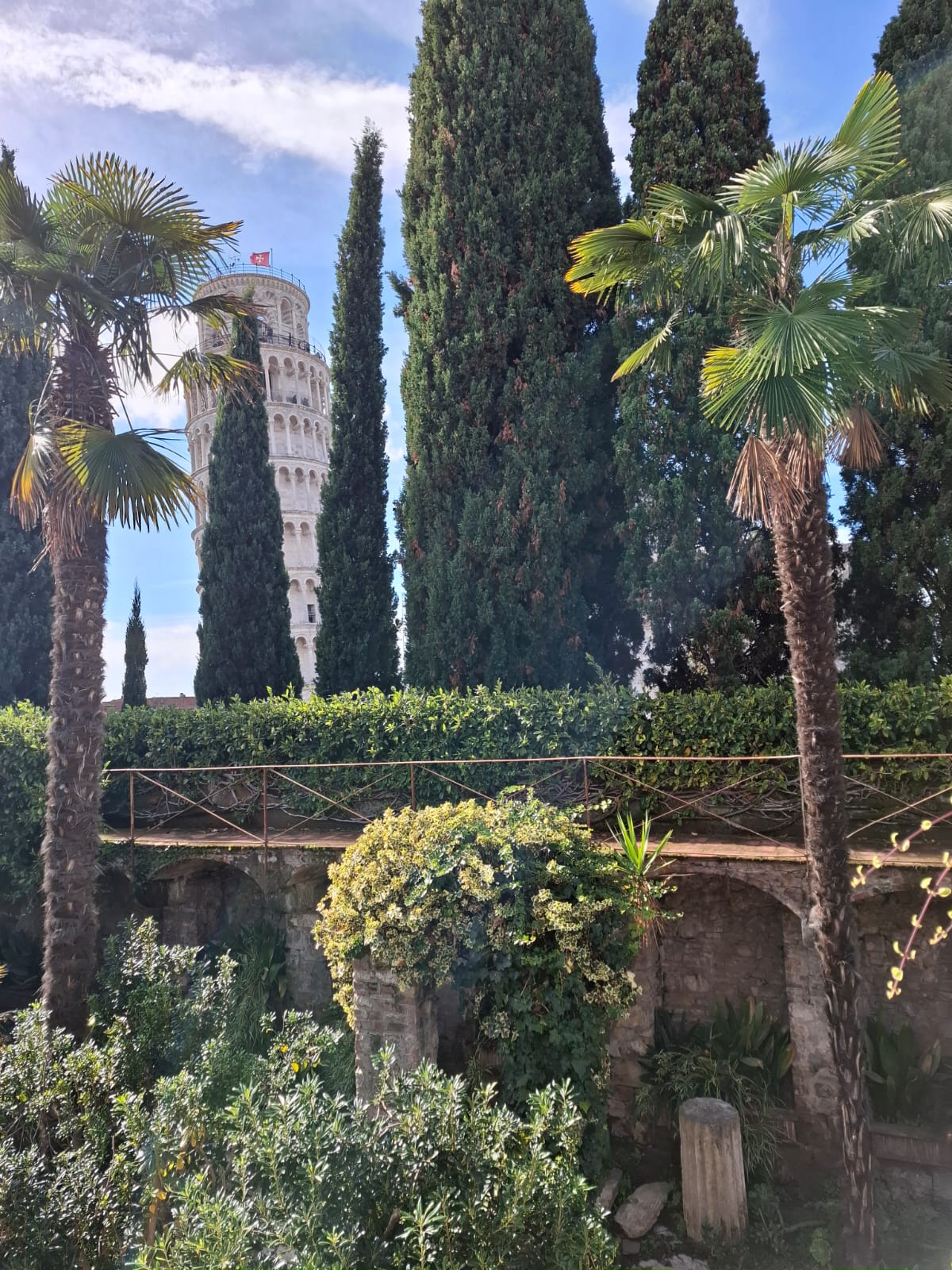Medical Education in Europe (1350-1750)
Centre for the Study of Medicine and the Body in the Renaissance (CSMBR)
Domus Comeliana, Pisa, Italy
Gehalten von: Nicole Falconi & Marie Krüger
Datum: 22.10.2025, 15:00 h
Vortrag
Between Theory and Practice – Anatomical Theatres in Universities and Hospitals
Anatomical theatres have increasingly been investigated in medicine and architecture, predominantly as university-affiliated spaces. While Padua and Leiden became symbols of empirical science, dissection spaces within hospital complexes were often overlooked. Consequently, peripheral cases – including Iberian hospitals, where dissections predominantly occurred – have received limited attention in research. This contribution thus focuses on the parallels and demarcations of anatomical spaces in universities and hospitals, comparing Spanish and Dutch cases.
As part of a new spatial programme for the university, Leiden’s anatomical theatre (c. 1600) was built in the apse of a former Beguine church. Medical studies were based on the natural philosophy teachings at the university, while practical training at the municipal hospital and post-mortem room, was added from 1636 onwards. Although dissections were conducted at the university and the hospital – sometimes involving the same actors – the spatial setting played a crucial role in attributing different meanings to procedures and to the dead body.
The spaces created in the Leiden gasthuizen and the Barcelonian Hospital de la Santa Cruz transformed and (re-)defined existing infrastructures as well as underlying dynamics of knowledge circulation. Spanish universities initially lacked distinct anatomical theatres, however during the 18th century, spaces associated with surgical education increasingly emerged and led to the construction of the Real Colegio de Cirugía de Barcelona (1761 to 1764).
Juxtaposing Netherlands and Spain, this joint presentation addresses following questions: What differing status did anatomical theatres hold within diverse institutions? Which epistemic interests and professional identities supported the dissections? How did these spaces respond to specific functional requirements and contribute to shaping and reinforcing conceptions of the body, society, and scientific knowledge? By examining these dimensions, the presentation aims to illuminate how architectural and institutional contexts mediated the production and circulation of anatomical and medical knowledge in early modern Europe.


